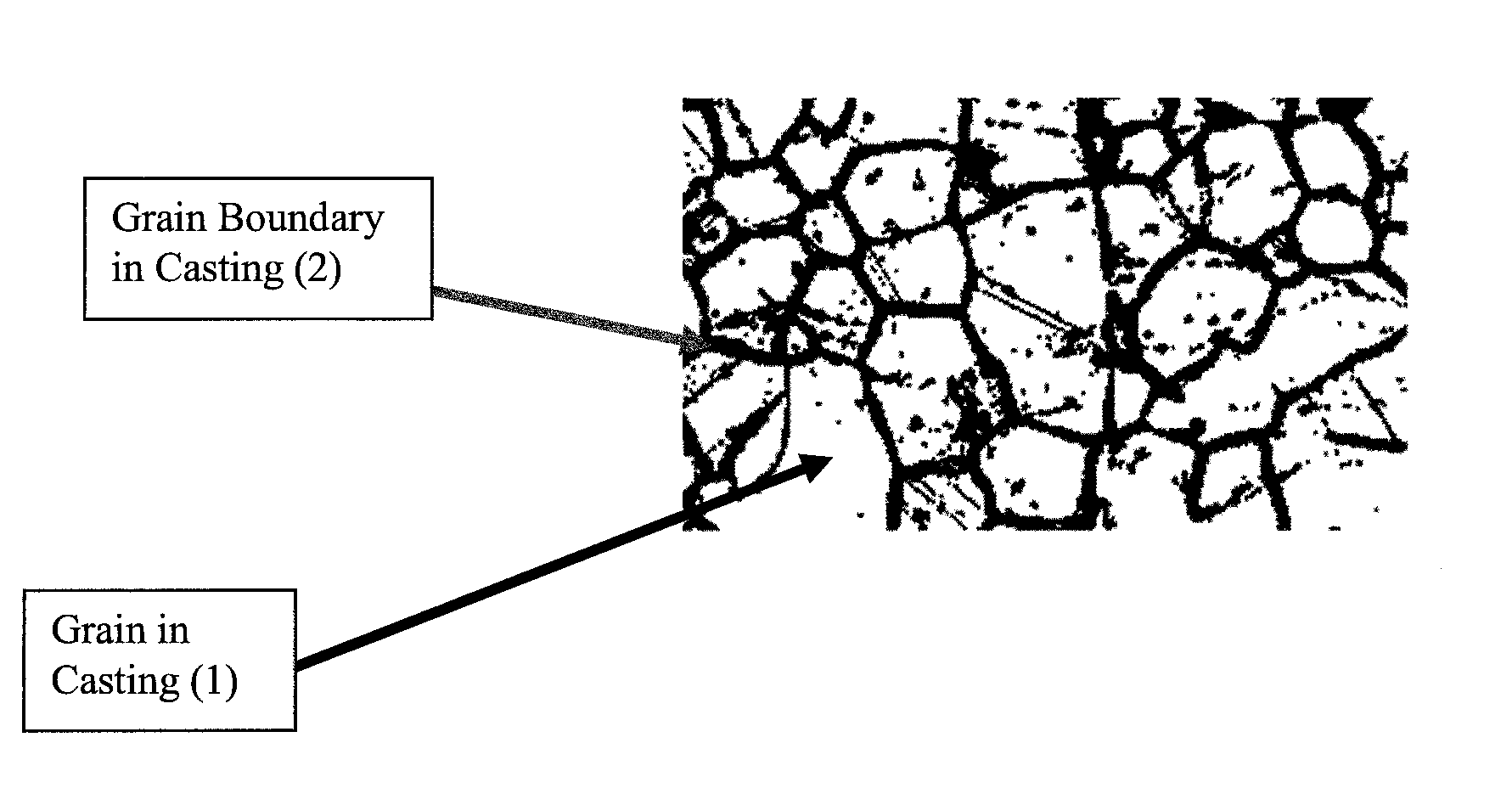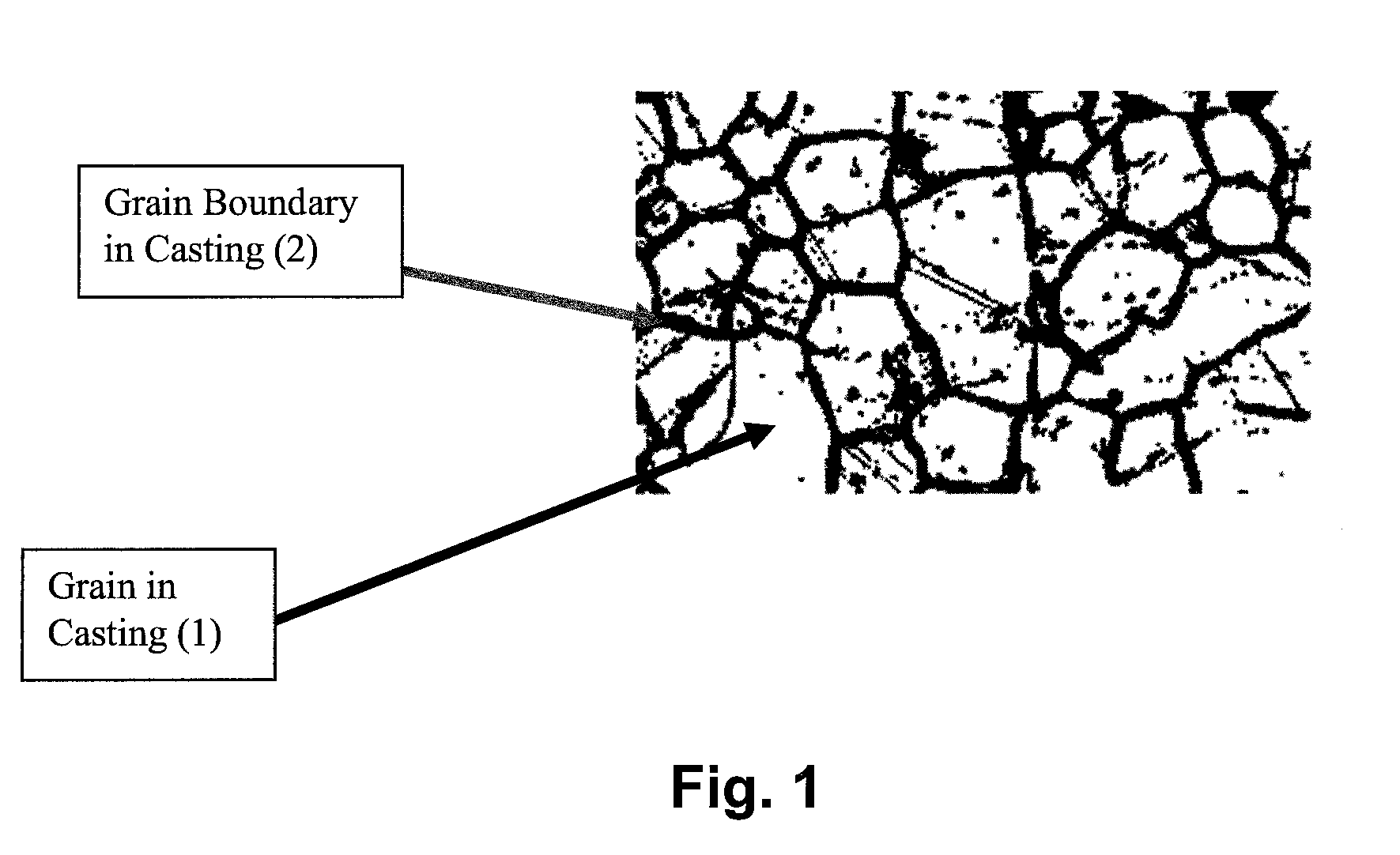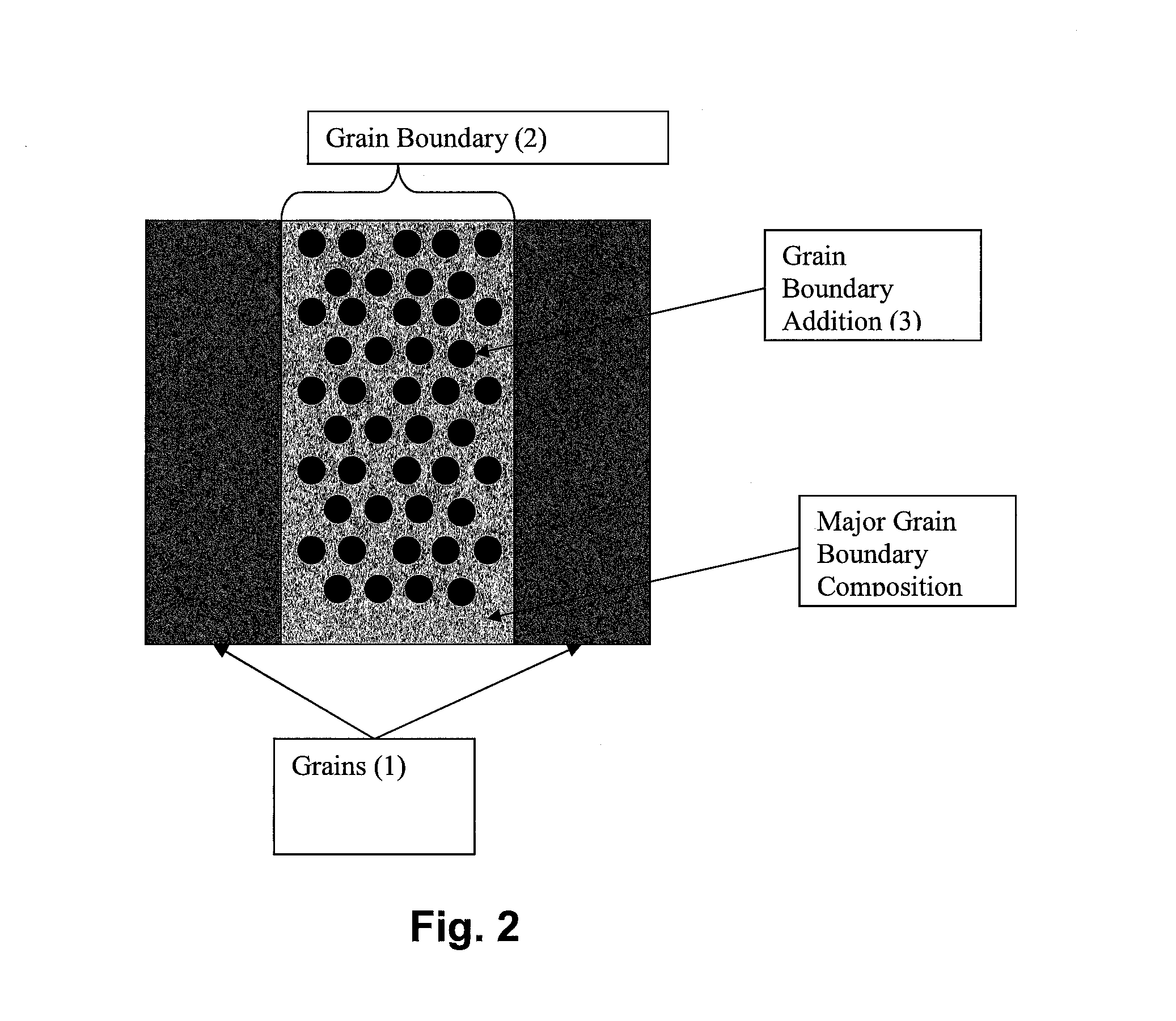Manufacture of Controlled Rate Dissolving Materials
a dissolving material and controlled rate technology, applied in the field of new materials, can solve the problems of limited strength, poor reliability, widespread adoption, etc., and achieve the effects of enhancing mechanical properties of composite materials, ductility and/or tensile strength, and low cathode particle loading
- Summary
- Abstract
- Description
- Claims
- Application Information
AI Technical Summary
Benefits of technology
Problems solved by technology
Method used
Image
Examples
example 1
[0061]An AZ91D magnesium alloy having 9 wt. % aluminum, 1 wt. % zinc and 90 wt. % magnesium was melted to above 700° C. About 16 wt. % of 75 um iron particles were added to the melt and dispersed. The melt was cast into a steel mold. The iron particles did not fully melt during the mixing and casting processes. The cast material exhibited a tensile strength of about 26 ksi, and an elongation of about 3%. The cast material dissolved at a rate of about 2.5 mg / cm2-min in a 3% KCl solution at 20° C. The material dissolved at a rate of 60 mg / cm2-hr in a 3% KCl solution at 65° C. The material dissolved at a rate of 325 mg / cm2-hr. in a 3% KCl solution at 90° C. The dissolving rate of metal cast structure for each these test was generally constant. The iron particles were less than 1 μm, but were not nanoparticles. However, the iron particles could be nanoparticles, and such addition would change the dissolving rate of metal cast structure.
example 2
[0062]An AZ91D magnesium alloy having 9 wt. % aluminum, 1 wt. % zinc and 90 wt. % magnesium was melted to above 700° C. About 2 wt. % 75 um iron particles were added to the melt and dispersed. The melt was cast into steel molds. The iron particles did not fully melt during the mixing and casting processes. The material exhibited a tensile strength of 26 ksi, and an elongation of 4%. The material dissolved at a rate of 0.2 mg / cm2-min in a 3% KCl solution at 20° C. The material dissolved at a rate of 1 mg / cm2-hr in a 3% KCl solution at 65° C. The material dissolved at a rate of 10 mg / cm2-hr in a 3% KCl solution at 90° C. The dissolving rate of metal cast structure for each these test was generally constant. The iron particles were less than 1 μm, but were not nanoparticles. However, the iron particles could be nanoparticles, and such addition would change the dissolving rate of metal cast structure.
example 3
[0063]An AZ91D magnesium alloy having 9 wt. % aluminum, 1 wt. % zinc and 90 wt. % magnesium was melted to above 700° C. About 2 wt. % nano iron particles and about 2 wt. % nano graphite particles were added to the composite using ultrasonic mixing. The melt was cast into steel molds. The iron particles and graphite particles did not fully melt during the mixing and casting processes. The material dissolved at a rate of 2 mg / cm2-min in a 3% KCl solution at 20° C. The material dissolved at a rate of 20 mg / cm2-hr in a 3% KCl solution at 65° C. The material dissolved at a rate of 100 mg / cm2-hr in a 3% KCl solution at 90° C. The dissolving rate of metal cast structure for each these test was generally constant.
PUM
| Property | Measurement | Unit |
|---|---|---|
| particle size | aaaaa | aaaaa |
| surface area | aaaaa | aaaaa |
| size | aaaaa | aaaaa |
Abstract
Description
Claims
Application Information
 Login to View More
Login to View More - R&D
- Intellectual Property
- Life Sciences
- Materials
- Tech Scout
- Unparalleled Data Quality
- Higher Quality Content
- 60% Fewer Hallucinations
Browse by: Latest US Patents, China's latest patents, Technical Efficacy Thesaurus, Application Domain, Technology Topic, Popular Technical Reports.
© 2025 PatSnap. All rights reserved.Legal|Privacy policy|Modern Slavery Act Transparency Statement|Sitemap|About US| Contact US: help@patsnap.com



